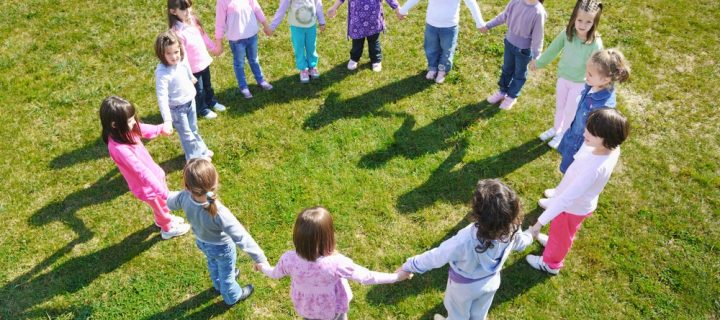You are less likely to catch COVID-19 outside, and people often teach outdoors already.
In some places in the world, school is routinely held outside. This is because the weather is hot, and there can sometimes be few government funds to actually build a school. In other places, although some may find it strange, select parents actually prefer to have their kids attend school outside.This is in order to reap the benefits of being in nature for long periods of time.
With the virus still in circulation and coronavirus numbers still rising rapidly in certain areas, finding alternative solutions to holding school inside packed buildings with little ventilation is becoming a high-ranking need. Many places around the world have turned to online schooling solutions. While these are definitely better than no school at all, they are obviously lacking. Students need to see each other in person, at least once in a while, and children need to play with other children.
What’s the answer?
Some schools in North America have reopened in spite of the pandemic. Sometimes this works, and at others times, it presents a drastic failure. It is all a bit of an experiment. At the time of this writing, 1,200 students are reported to have tested positive for COVID-19 at the University of Alabama. This is in just the last two weeks, while in-person classes resumed. In the final weeks of July, almost 100,000 new cases of the coronavirus were found in children in the US, forecasting a dismal starting point leading up to the beginning of school.
Related: Why Are Fewer Babies Being Born Prematurely During the Pandemic?
Holding classes outdoors could be a solution. This isn’t a new idea. During the early 20th century when tuberculosis was a threat in North America, classes are reported to have been held outside in order to reduce the transmission of the disease. This was also done during the 1918 flu pandemic, in some parts.
While it might sound odd to be sitting on the snow in January with blankets over your snowsuit as the teacher waxes on about global history, it could be a good idea. In fact, a great one. It is a fact that you are much less likely to catch just about any illness, including COVID-19, when you are outside. The presence of sunshine and wind contribute to this reality.
According to reports, a study published in the Journal of Infectious Disease discovered that, when exposed to midday sun, up to 90% of coronavirus particles actually deactivated within 10 minutes. Being outside is also therapeutic. Being in nature has been proven to help both your mental and physical health.
What would we need to do it? Proper outdoor clothing is a necessity. Every outdoor enthusiast will tell you there is very little bad weather, just bad clothing. Students would need to dress appropriately. But this can be done. Some forest schools located in northern climates continue to hold classes outdoors year round, even as the temperature drops. Of course, students and educators can draw their own boundaries. David O’Hara, a professor at Augustana University in Sioux Falls, South Dakota who has relished teaching outside even before the pandemic, told CNN he does so whenever the weather is “non-lethal”. What does this mean? For him, “lethal” includes tornados, thunderstorms, and temperatures below -20 degrees Fahrenheit.
Related: Coronavirus: Why Some People Don’t Care
Obviously we all have varying versions of what is acceptable.
What will they sit on? As far as infrastructure goes, desks can go outside, or students can sit on round logs, hay bales, the ground, or even picnic tables. We can get creative. Canopies and tents can provide shade if needed. Old-fashioned black boards can go far. Public spaces like parks can be used if the school yard is too small.
The Mayo Clinic presently lists “gatherings with friends” outdoors as a low-risk COVID-19 activity. The American Academy of Pediatrics says that being able to attend school in person is important for not only students’ academic progress, but also their psychological development, as well as their mental health and safety. If doing so outside reduces the risk for everyone, it seems like an obvious way to go.
Aristotle and other ancient philosophers routinely held classes outside. There is no reason why we cannot do it, if even just for a couple of hours per day. Keeping our communities safe while the coronavirus surges through our lives is paramount and it does not have to come with the sacrifice of the wellbeing of our young people.
photo credits: ESB Professional/Shutterstock.com












